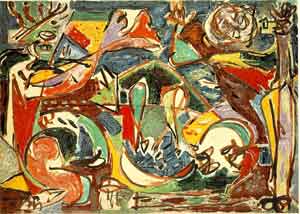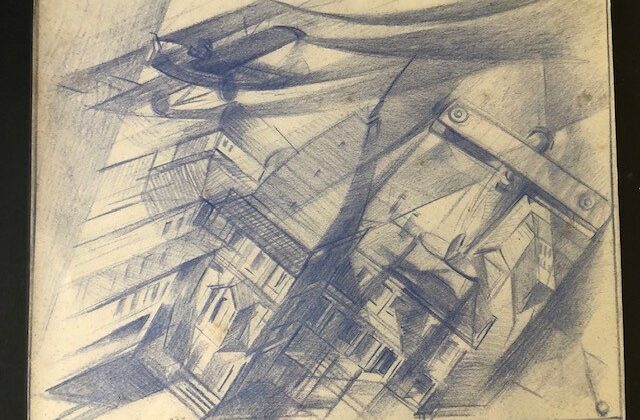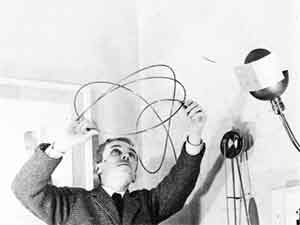Pollock and the Irascibles – The New York School

Pollock and the Irascibles – The New York School
24 September 2013 – 16 February 2014
Palazzo Reale, Milan
By Francesco Carelli Professor FM, Milan, Rome
Jackson Pollock, but not just him: Rothko, de Kooning, Kline too. An artistic revolution, a break with the past, experimentation, energy: this is the story that is told by the “Pollock e gli Irascibili” at the Palazzo Reale ( Royal Palace ), in Milan.
The exhibition is produced and organized by Arthemisia Group and 24 ORE Cultura – Gruppo 24 ORE, in collaboration with the Whitney Museum of New York.
Through the paintings of the 18 artists guided by the charismatic Pollock and referred to as “The Irascibles” after a famous protest they staged against the Metropolitan Museum of Art, the visitor is offered a complete view of an essential artistic style that reinterpreted the canvas as a space for individual freedom of thought and action; it was both the style of the “New York School” and a unique phenomenon, which characterized postwar America and that with overwhelming force influenced Modern Art across the world.
The exhibition, which includes more than 49 masterpieces from the Whitney Museum in New York, inaugurates the celebration of Milan’s “ American Autumn ,” which will continue until the end of October when a major monographic show dedicated to Andy Warhol is due to open as well.
The undisputed star of “Pollock and the Irascibles ” is Pollock’s Number 27, perhaps his most famous work, as well as being a special loan given the delicateness and fragility of the oil painting, and its remarkable dimensions—it is some three meters long. Exceptionally, the Whitney Museum has given its permission for it to travel, and a whole room will be devoted to it in Palazzo Reale.
The other works displayed span from the late 1930s to the mid-1960s. Some of the most important works in the Whitney’s permanent collection are showcased as well, works like Mahoning by Franz Kline (1956), Door to the River by Willem de Kooning (1960) and Untitled (Blue, Yellow, Green on Red) (1954) by Mark Rothko, alongside works by artists who may be less famous, but that represent their mature periods and, more generally speaking, their time.
This distinction and this dualism are significant in terms of the history of the Whitney’s collecting practices, as the museum was an early, major supporter of Abstract Expressionism, and sought to provide a more diversified and complex picture of what was happening in New York at the time.
Although artists like Jackson Pollock, Willem de Kooning and Barnett Newman were no doubt pivotal in promoting abstract art in New York in that period, equally important were the painters William Baziotes and Bradley Walker Tomlin, whose oeuvre offers a complete narrative, a complex and diversified one that is representative of the period itself.
It is worthwhile recalling the episode mentioned above that led to the birth of the label “The Irascibles.” In May 1950 the Metropolitan Museum of New York announced that it would hold a major exhibition dedicated to contemporary American art. Absent from the group of artists invited to show their works were the painters who, since the mid-1930s, had taken the first steps toward a new pictorial language, bolstered by the art of the past and at the same time turned toward Abstract Expressionism.
Action Painting, a movement clearly defined by then, included artists whose style was gestural and invasive, manifested in the use of the drip technique or rhythmical brushwork, as well as artists whose approach was more contemplative, characterized by large, soft-edged fields of color. The movement boasted artists of the caliber of Jackson Pollock, Willem de Kooning, Mark Rothko, Robert Motherwell and Barnett Newman, who were the promoters of this new painting style, as well as being the key figures in the group dubbed “The Irascibles” in 1950.
It was the title of an editorial in the New York Herald Tribune which first gave this name to the signatories to the open letter sent to Roland L. Redmond, president of the Metropolitan Museum, and published a few days later on the front page of the New York Times. In the letter the artists asserted their complete lack of confidence in being included in the exhibition, as the jurors that had been chosen by the museum to select the works were known for their hostility toward their art.
In January 1951 Life magazine published the iconic picture taken by Nina Leen which showed fifteen of the eighteen “Irascibles,” who had chosen to pose in such a way as to look like bankers. Jackson Pollock is seated in the middle, surrounded by Willem de Kooning, Mark Rothko, Barnett Newman, Robert Motherwell, Adolph Gottlieb, William Baziotes, James Brooks, Bradley Walker Tomlin, Jimmy Ernst, Ad Reinhardt, Richard Pousette-Dart, Theodoros Stamos, Clyfford Still and Hedda Sterne, the only woman in the group also in the picture. This historical photograph is reproduced for the exhibition at Palazzo Reale.
In the photo album of art history, the picture of ‘The Irascibles’ is one of the most famous of all, at least as famous as the Futurists all dressed up for one of their grand soirées, or the Dada artists immortalized by Alfred Stieglitz, or the Surrealists in their stylish attire, on down to the five members of the Transavanguardia wearing their tuxedos in the early 1980s. These “Irascibles,” in spite of their docile appearance, were ‘technically’ angry about something that had happened, but generally speaking, their protest, summed up in the open letter they had sent to the president of the Metropolitan Museum and that contained their objections, put them in a position that was rather typical during t he avant-garde period: joined in battle, working together, sharing the successes as well as any failures in a compact manner.



